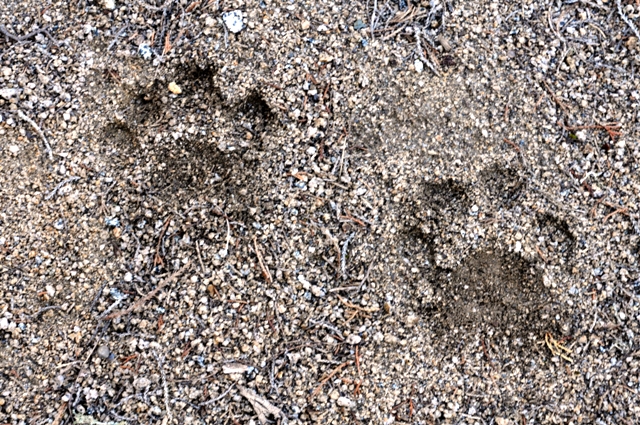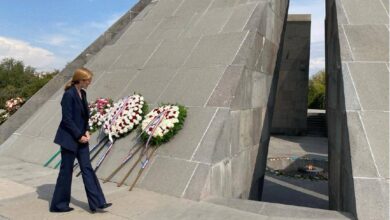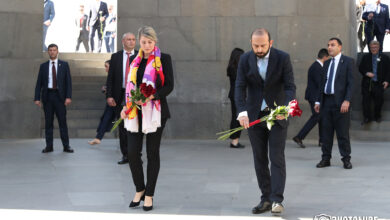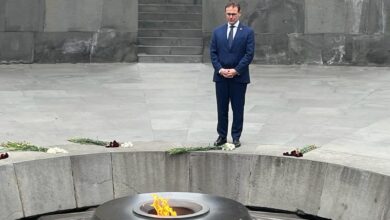
The landmark recording was made in July in the Caucasus Wildlife Refuge, which is supported by World Land Trust (WLT) and IUCN-Netherlands. The Caucasus Wildlife Refuge is managed by WLT’s conservation partner in Armenia, the Foundation for the Preservation of Wildlife and Cultural Assets (FPWC), wildlifeextra.com writes.
Manuk Manukyan, FPWC’s Coordinator of Conservation Projects, is one of the few people to have seen a Caucasian Leopard in the wild, being lucky enough to catch sight of one nearly a decade ago. He told WLT: “The leopard is no longer a ghost. We know he (or she) is there and that the habitat is suitable. It is very quiet and there is plenty of prey. We will adjust the cameras and sooner or later we will get pictures of the entire animal.”
Since the reserve was created in 2010, FPWC staff – some of them funded by WLT’s Keepers of the Wild programme – have diligently recorded leopard tracks and signs and used this information to locate camera-traps provided by WLT near to where the leopards are thought to roam. At the same time, FPWC staff have made every effort to protect the Caucasian Leopard’s habitat and prey, in particular Bezoar Goats, wild boars and Armenian mouflon.
Mary McEvoy, WLT’s Conservation Programmes Manager (Asia and Africa Regions) said: “At last, the efforts of FPWC staff have paid off. The whole WLT office was very excited to see the footage so I can only imagine how elated all at FPWC must be feeling. This is a great moment for wildlife conservation in Armenia.”
According to World Wide Fund for Nature (WWF) Armenia, there are just 3 – 5 individuals recorded in Armenia (some of them are migratory). Each leopard needs habitat of some 44,500 – 60,000 acres (18,000 – 25,000 hectares), and their populations have been decimated by hunting and poaching, and degradation of habitat caused by livestock grazing, plant gathering and deforestation.
The Caucasian Leopard has only been photographed in the wild in Armenia on two occasions, in 2005 and 2007. Those leopards had entered Armenia from Iran in territory much further south of the CWR.
The leopard’s stronghold within Armenia is the rugged and cliffy landscape of Khosrov State Reserve and surrounds. The Caucasus Wildlife Refuge is located on land adjoining the Khosrov State Reserve, south-east of the capital Yerevan on the south-western slopes of the Geghama mountains.








